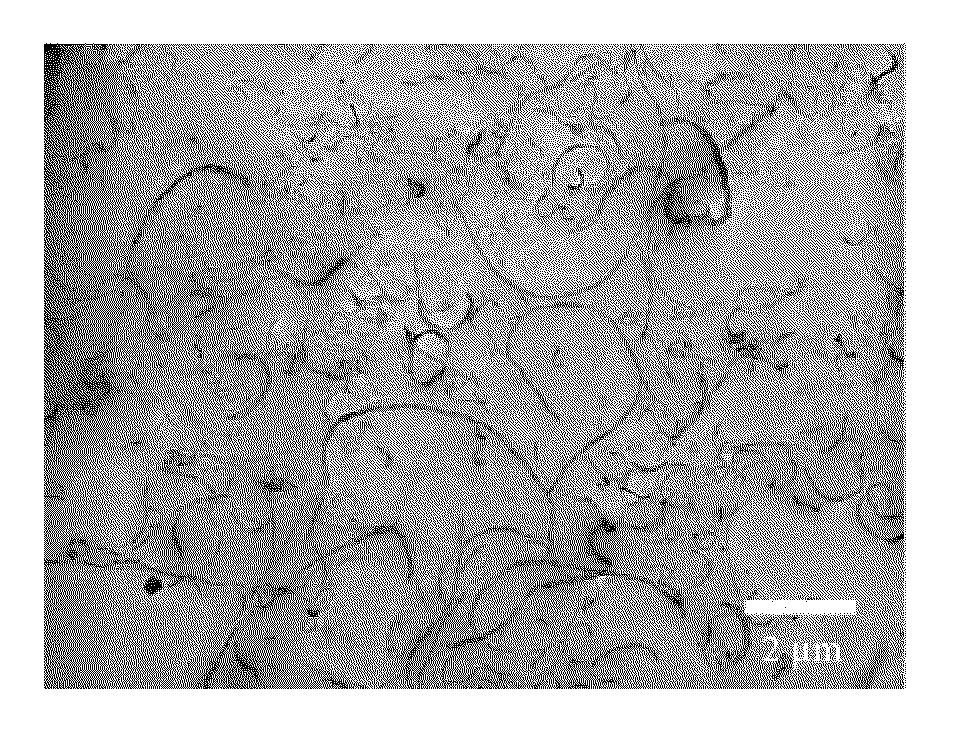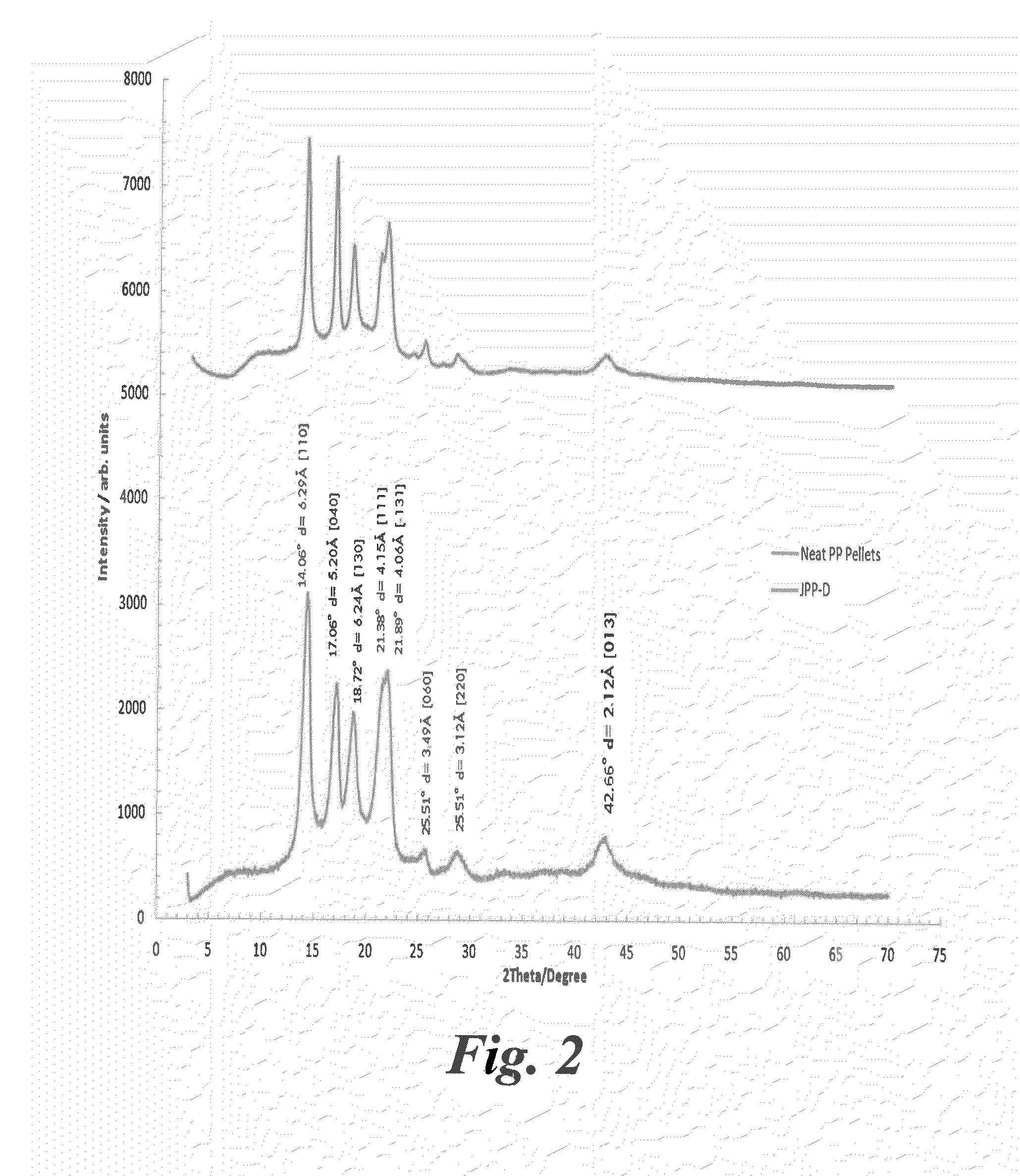Dispersion of carbon nanotubes and nanoplatelets in polyolefins
- Summary
- Abstract
- Description
- Claims
- Application Information
AI Technical Summary
Benefits of technology
Problems solved by technology
Method used
Image
Examples
examples
Materials
[0056]ZrP nanoplatelets were used to disentangle and disperse the MWCNTs in aqueous solution. The synthesis, exfoliation, and use of ZrP for MWCNT disentanglement has been reported previously [20, 21]. Briefly, 15.0 g of ZrOCl2.8H2O (Fluka) was refluxed in 150.0 mL of 3.0 M H3PO4 (EM Science) under mechanical stirring at 100° C. for 24 hours. The products were subsequently washed three times through centrifugation and redispersion, dried at 85° C. in an oven for 24 hrs, and gently ground with a mortar and pestle into a fine powder. The ZrP powder was exfoliated with TBA+OH− (Aldrich, 1 mol / L in methanol) at a molar ratio of ZrP:TBA=1:0.8 in water. Pristine MWCNT (P-MWCNTs) (purity 90%, average diameter 3(CH2)17NH2, Sigma-Aldrich Chemicals, 97%) was used as received. A commercial grade PP, designation 4204, was supplied from Japan Polypropylene (JPP) Ind., Co., Ltd., Japan, with a melt flow index (MFI) of 1.9 g / 10 min.
Preparation of CNT / ZrP nanocomposites
Synthesis and Exfoli...
PUM
| Property | Measurement | Unit |
|---|---|---|
| Percent by mass | aaaaa | aaaaa |
| Percent by mass | aaaaa | aaaaa |
| Pressure | aaaaa | aaaaa |
Abstract
Description
Claims
Application Information
 Login to View More
Login to View More - R&D
- Intellectual Property
- Life Sciences
- Materials
- Tech Scout
- Unparalleled Data Quality
- Higher Quality Content
- 60% Fewer Hallucinations
Browse by: Latest US Patents, China's latest patents, Technical Efficacy Thesaurus, Application Domain, Technology Topic, Popular Technical Reports.
© 2025 PatSnap. All rights reserved.Legal|Privacy policy|Modern Slavery Act Transparency Statement|Sitemap|About US| Contact US: help@patsnap.com



